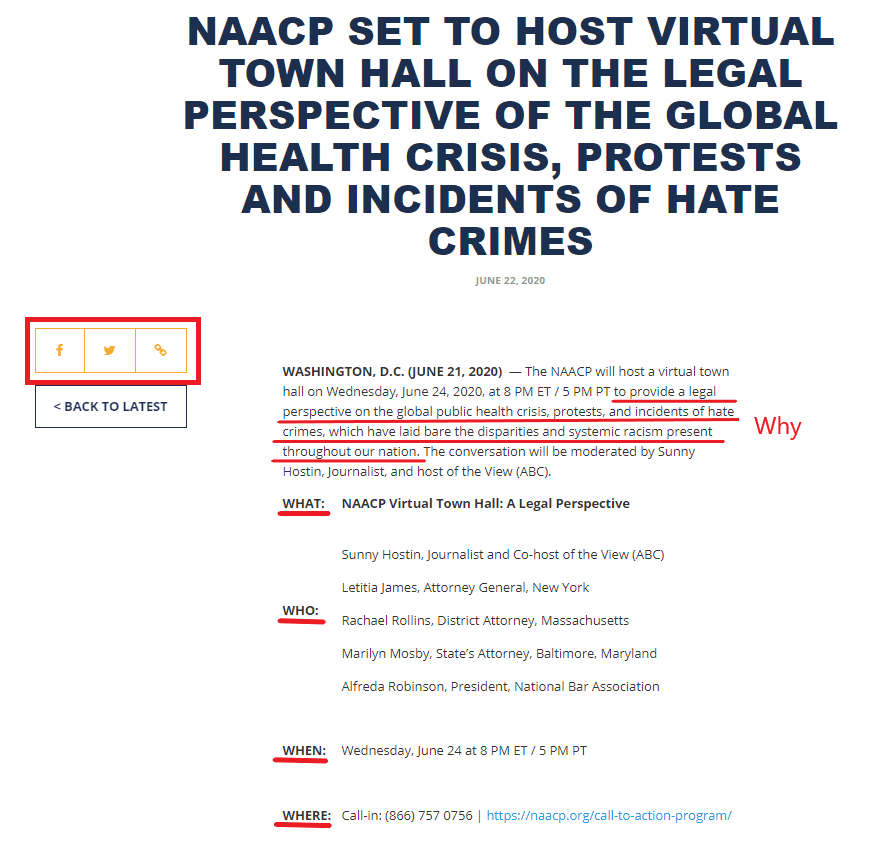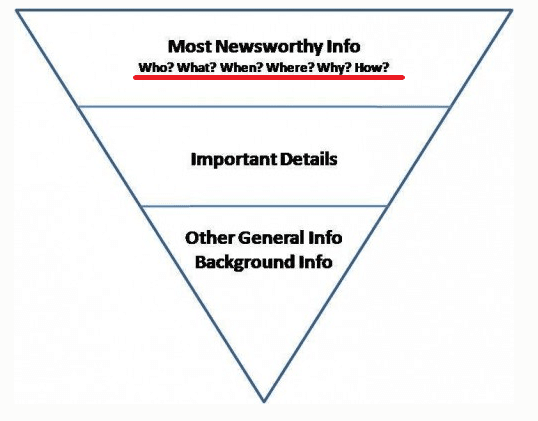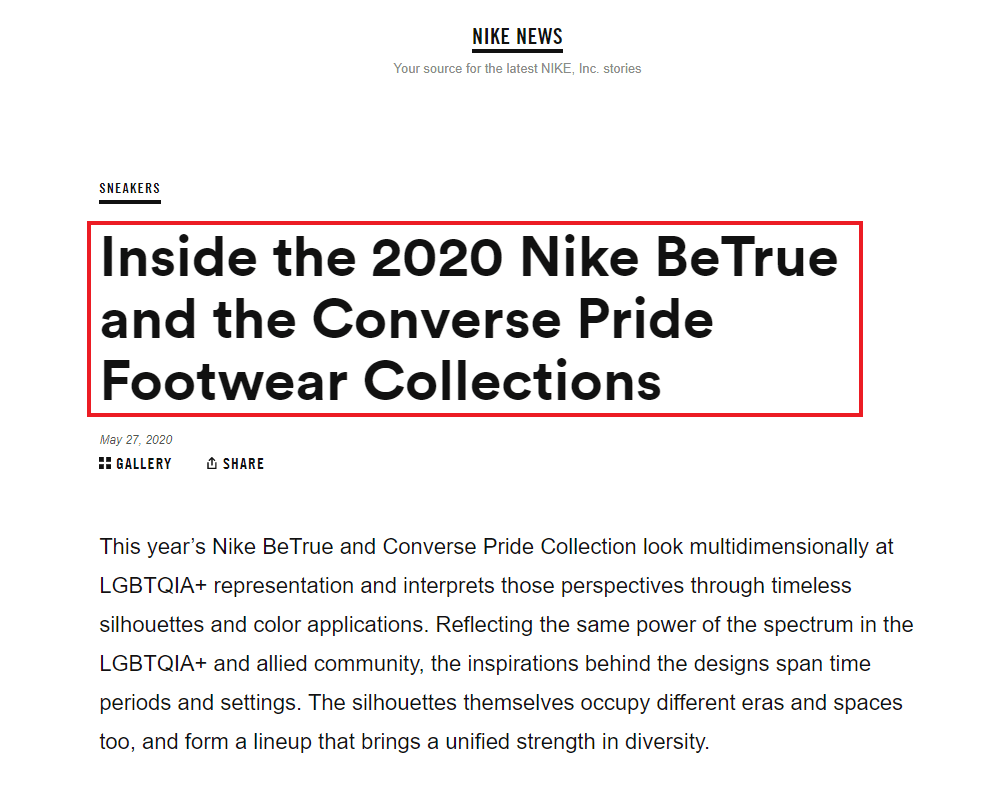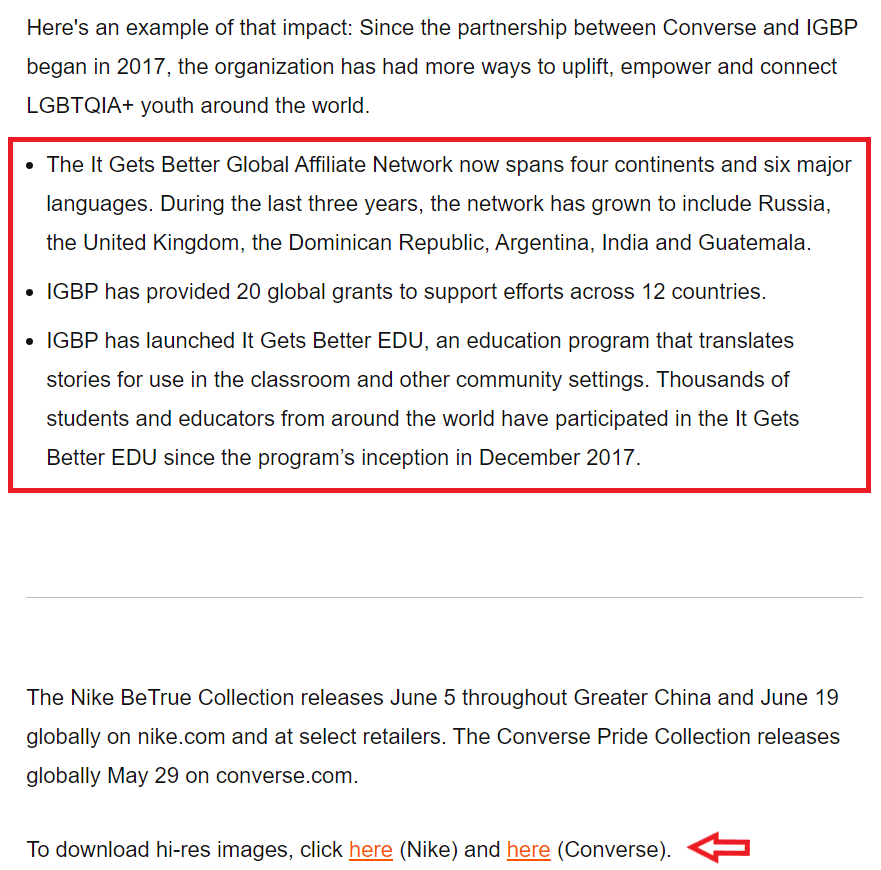How to Develop a Successful PR Strategy In 2021 (Guide)
The way to develop and launch a successful PR strategy has changed. In this guide, you’re going to learn how strategic PR can help your business grow in 2021. More specifically, Read More...
Wondering what’s the difference between a media advisory and a press release?
Then you’re in the right place.
In this guide, I’m going to show you exactly that.
More specifically, we’re going to talk about:
We’ve got a lot to cover, so let’s get into it.
First, it’s important to understand what exactly a media advisory is before we can start comparing the differences with a press release.
A media advisory, or media alert, is a notice that is given to members of the media to cover an upcoming event with only the most important details displayed.
Media advisories have been important for businesses for quite some time.
In the Google Trends chart below, you can see media advisory has had pretty consistent search volume over the past 5 years.


Traditionally they are one-page, concise and answer the basic questions for any event:
Who, What, When, Where, and Why.
It should be short, to the point, and not contain any fluff about the new release or details about the business that’s hosting the event.
Media advisories are best for grand openings, book releases, fundraisers, press conferences, and other events that are upcoming soon.
Generally, it should be sent within a week of the event happening and then a follow up the day before as a reminder to the news outlet.
These are used to generate media interest in covering a specific live event and they act as an invitation to ultimately have them cover it on their publication.
Media outlets get thousands of these notifications so it’s important to take some time and make the information easily digestible for the reader.
Now that you know what a media advisory is, let’s take a look at a great example below.
This media advisory is a recent example from the NAACP. It does a great job giving the necessary information in a concise manner and highlights the import aspects through design.
The title is very large so it captures the reader’s attention and quickly tells what the advisory is about.
From there, your eyes are drawn to the bolded sections. The first bolded part is the location and date the media advisory was published.
This is important because news outlets need to know how timely this information is and if they are in a location to attend what you are presenting.
The next bolded areas are What, Who, When, and Where – 4 out of the 5 basic questions we discussed.
Breaking these sections down allows the reader to easily digest the information and gather the key details they need.
You may have noticed there is no Why section. This particular media advisory incorporates “why” into the first paragraph where they also provide key details of the event before the bolded sections.


There are two things we particularly like about this media advisory.
First, since this is a virtual event the author used the where section for their contact information.
Instead of just providing the website address where the virtual town hall will be held, the author has also included a phone number.
This allows for easy follow-up if needed.
Second, we love how social media icons are prominently placed to encourage readers to share the event with their virtual audience.
This is a great way for your information to reach potentially new media contacts.
Overall, it does a great job of getting basic information across while highlighting a few areas of importance.
So now you hopefully understand what a media advisory is a bit better but how do you begin to write one?
Well, there are many ways you can write and stylize your media advisory but we recommend using the inverted pyramid style to achieve a concise but effective content piece.
The inverted pyramid style is probably most popular amongst journalists when creating news stories but many other writers use this style as well to prioritize and structure the information they are trying to share.
This style is a great illustration of how you should format your text so the most notable information is at the top, important details follow and then you end with additional information and/or contact details.


The key to writing in an inverted pyramid style is to answer Who, What, When, Where, Why, and How at the beginning.
Some writers prefer to answer these questions in a paragraph style while others list each section out.
And, some even do both! (like the NAACP example above)
The information your text is conveying is the most important part but how it is formatted is essential as well because this can help readers understand it better.
If you are still struggling to write your media advisory, you can use this simple template below. All you have to do is fill in the adjustable fields enclosed in these brackets – {XYXY} and provide key information in an intriguing manner.


Author’s Note: Most people use ### to show the end of the media advisory. You can place these 3 symbols (centered) after the Why section or below the Contact Person’s Email.
Let’s move on to the next section, where I’ll share with you everything you need to know about press releases.
Now that we understand what a media advisory is and have looked at how to write one, let’s take a deeper look at what a press release entails.
A press release is a brief content article that is used to announce something newsworthy to the public and reach your target audience through media distribution.
You are able to manage your company’s public image while sharing content that will bring awareness to your business.
A press release creates a compelling story with data, quotes, and other important information to communicate your company’s news story in a clear and concise way.
There has always been a pretty consistent search volume for press release information, examples, or templates but as you can see from the graph below, there was a large increase around the time coronavirus started impacting organizations globally.


In this unprecedented time, press releases were and are still very important to share your newsworthy stories with the public.
Let’s take a closer look at a great example of a recent press release.
The sportswear company Nike announced the 2020 Nike BeTrue and Converse Pride footwear collections recently.
The subject line is short and describes exactly what is being talked about in a concise way.


This press release was strategically released at the end of May, with Pride events being celebrated annually in the month of June.
We mentioned earlier that these content pieces need to be newsworthy.
Nike does a great job accomplishing this by informing its audience of relevant news in a timely manner.
It then includes a few short paragraphs that go further into details about their support for the LGBTQIA+ community and the new shoe releases that are upcoming.


The main purpose of this press release was to showcase the new products and it’s very clear the call to action is to buy these new shoes.
Nike then ends the press release with important dates on public releases so that the reader can be informed on the next steps to look forward to.
There are two things that stand out to us and make this a great example.
First, they include background information regarding the charities and other partners that the sales are directly benefiting. By sharing the direct impact a purchase could make to a charitable organization, it helps connect the customer to your brand.
We also like how informative the press release is without being too long or overdrawn. Every sentence has a purpose and place to inform the recipient of what’s going on.
Overall, this example is clear and direct with the message they are delivering in their media release.
Now we can discuss how to write a press release. Every press or news release should have an angle so you should start by figuring out what the angle of your story is.
Similar to writing a media advisory, you always want to include “For Immediate Release” and the date of publication at the top.
Also include the press contact information including name, phone number, and email.
Then you will need a headline that grabs your audience’s attention.
Next, you will want to construct your lede.
The lede should be captivating as well but avoid duplicating the information from your headline. Try to summarize the next most important aspects of your story here.
From there, start formulating 2-5 paragraphs including supporting details and quotes from influential people.
You can also add summary bullet points to highlight important information. These bullet points can be placed before your intro paragraph or in-between your supporting details.
After placing the contact details again (possibly including times you are available for a phone call), you should include your boilerplate copy.
Author’s Note: Boilerplate text should briefly describe your organization and should be placed on every press release you send.
For an even more in-depth look at how to write a press release, view our full guide here.
Our full guide on how to write a press release also includes this great press release template.
It provides a great visual reference for each part and then goes on to explain them in more detail.
Feel free to use it to write a great press release.
This template makes it super easy to create a press release but keep in mind, you should always make adjustments based upon the message you are trying to convey and your brand’s tone.
Author’s Note: Some people think press releases have to be serious but if your brand is fun and playful, it’s ok to incorporate that into your release!
It’s important to know the differences between a media advisory and press release so you can use them effectively.
While they may have some similarities, knowing the differences will help you as a public relations professional to be taken seriously in the industry.
As we can see from the graph below, press releases have consistently been more popular in terms of Google searches over the past 5 years, with a significant spike recently.


However, this doesn’t mean you should use the press release format for everything. Doing so will decrease your credibility and may lead to media channels not responding.
Let’s dive deeper into the four main differences between a media advisory and a press release.
The first and most notable difference between the two is the purpose of the release.
A media advisory is simply an invitation to media personnel for them to attend a scheduled event and to generate attendance before an upcoming event.
You do not control the narrative or what attendees are going to say to members of the media, only increasing turnout for your live event.
On the other hand, a press release is a pre-packaged story that is based on storytelling. You control the narrative and it can be released whenever, as long as it’s newsworthy.
Media outlets can then turn around and publish your content verbatim or edit as they see fit for their audiences and ultimately for your target audience as well.
A media advisory should be kept to a one-page document that is short and to the point.
The advisory will contain very few details and commentary and instead, will focus on the crucial 5 questions: Who, What, When, Where, and Why
Press releases are generally a little longer, around two pages that include three or four short paragraphs with a couple of quotes.
You don’t want to include everything you can think of for your company, but instead strategically include the facts that you would like published.
Around 400-500 words is a good length to strive for.
A media advisory needs to be sent to media outlets well in advance so they are aware of the date and time of your event.
Typically, you would send it twice. Between 5-7 days prior to the event, the first one goes out so people can plan accordingly or schedule someone to be in attendance.
The second one gets sent the day before the event as a gentle reminder that the event is upcoming.
However, with a press release, because it’s not tied to a specific event it can be more aligned to the client’s goal or intention.
Are you trying to get published in a newspaper or monthly magazine? These might require you to send them at different times in order to make yourself stand out with all the other requests they receive.
There is no hard rule on when the best time to send a press release is.
It will take some to figure out when the best time works for you, but it’s important to always keep in mind that it should be relevant and newsworthy to your audience.
Since the media advisory is an invitation, it is targeted to the members of the press that are likely to attend and distributed to local media, rather than a national audience.
Press releases are sent to a wider audience than a media advisory and can many times be sent to both local and national media outlets to generate buzz around a company.
For example, if you would like to send a media advisory to the local television station, you might follow up the event with a press release to additional media like newspapers and magazines.
So, there you have it.
You now know what’s the difference between a media advisory and a press release.
As a PR professional, it’s important to know the difference between those two activities, so that you know when you should use each.
Do you want to announce an upcoming event? Then you probably need a media advisory.
You want to announce something new (and newsworthy) like a product launch? Then you probably need a press release.
Both of those activities can get you media coverage in prominent media outlets; the main difference between the two activities is that they have a different purpose.
Make sure to use them wisely and you’ll be able to get the media attention that you want.
Good luck!
Note: If you want to learn about how to write a press release or how to distribute a press release, make sure to read further in our blog.
No spam, no BS, unsubscribe at any time.